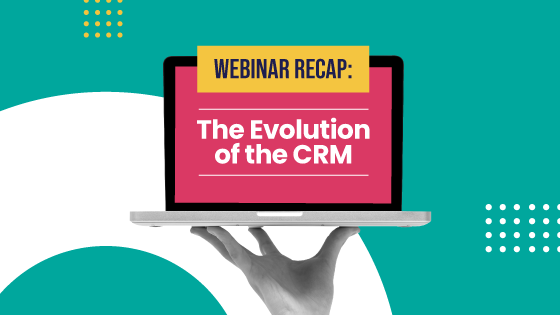


Webinar recap: The evolution of the CRM





Recently, we got together with Steve Vaughan from HubSpot to chat about the Customer Relationship Management (CRM) system, and how it's evolved to be an integral part of any growing business. By housing everything that sales, marketing, and service teams need in a single platform, you can reduce friction.
According to a HubSpot market research survey, conducted in June 2020, 47% of sales leaders don't believe their current CRM is powerful enough to help them grow over the next 3 years.
How the sales process has changed
It's no secret that companies winning in the area of customer experience have a CRM at the centre. Here are a few key indicators that you work for a customer-centric business:
- There's thought around how to get customers onboarded quickly
- You're not just focussed on what you sell, but how you sell
- What matters is what you give to your customers
This is probably a good time to ask yourself: Are you working for a business that's structured to put customers at the centre?
Related: HubSpot Onboarding vs. Partner Agency Onboarding
Working in a "LegaCRM"
A "LegaCRM" is the group of tools that an organisation has relied on since its early stages to manage various business processes-from contact info storage to billing.
Although housing everything within a single platform seems like a no-brainer, it can take some convincing to get there. Depending on the company you work for, it may not be enough to be a budget holder. You may have to factor in executive buy-in, and look at data around employee adoption for software previously purchased.
Countless implementations for CRMs fail because they're either a pain to use, or there's a lack of internal appetite.
Tools that make up your "LegaCRM" may include:
- CPQ software (configure price and quote)
- Data
- Reporting
- Automation
Shifting away from multiple platforms is about adapting, and moving outside of your comfort zone as an organization.
General CRM red flags
Despite the appeal of having a "jack of all trades" type of tool, CRMs (and the humans behind them) have to be careful not to overload the system they're putting on the market. Sometimes, in the pursuit of flexibility, CRMs can become endlessly complicated. Why? Because many CRMs have been mistakenly built for budget holders, and the day-to-day users have been forgotten about.
When choosing your software, really keep in mind who will be in the system day after day. If it's not you, make sure you consult with the people who are. Get them a tool they'll be excited to use for their own information, and for the sake of the business.
According to CIO magazine, more than one-third of CRM implementation projects eventually fail.
4 principles for choosing a CRM
No matter what CRM you're evaluating, there are four key criteria to bear in mind:
1. Make sure that s*it is powerful.
The CRM of your choice needs to have enough juice to power your business processes and pave the way for growth. Don't live in the moment. Find alignment with your company's future state.
2. That system better be easy to use.
It doesn't matter what the CRM has to offer. If it isn't easy to get into, people are going to avoid it at all costs. Your investment will fall flat on its face. Why bother?
3. Need help? It's gotta be scalable.
Especially in the early stages of adoption, be sure that the CRM vendor offers 24/7 support that is scalable alongside the growth of your business. Cost is a factor-make sure it's not an arm and a leg.
4. Cover all your bases.
Your CRM should give you full view into the things your sales, marketing, and service orgs need frequent access to. It needs to have a place to centralise prospect and customer data, which ultimately cuts down on conversation admin.
Key takeaways:
If you take nothing else from this recap or this webinar, be sure to remember these three things:
- Choose a system that's easy to implement and train your team on.
- Make sure that the CRM system that you purchase can grow with your business.
- Although aiming for an holistic view, don't get a tool that tries to be or do too much.








